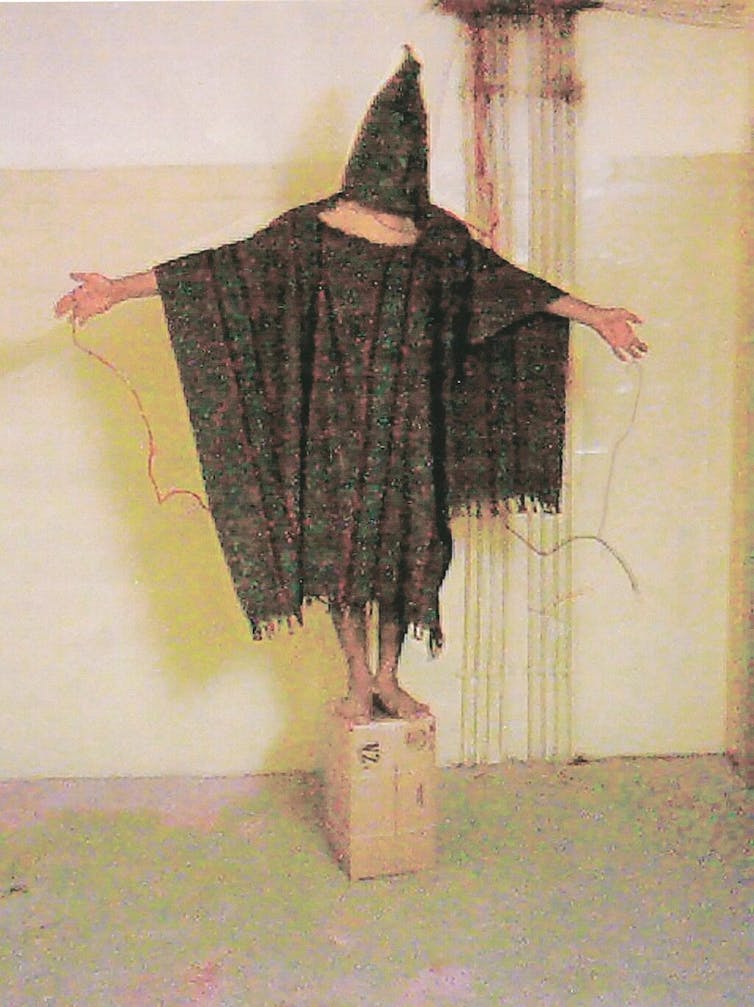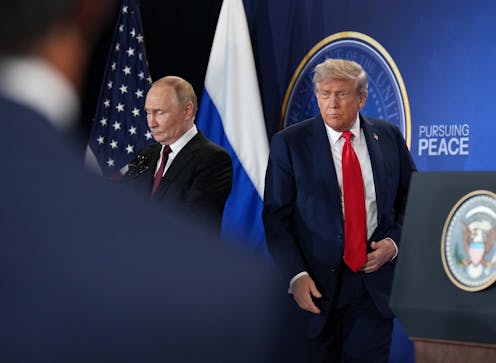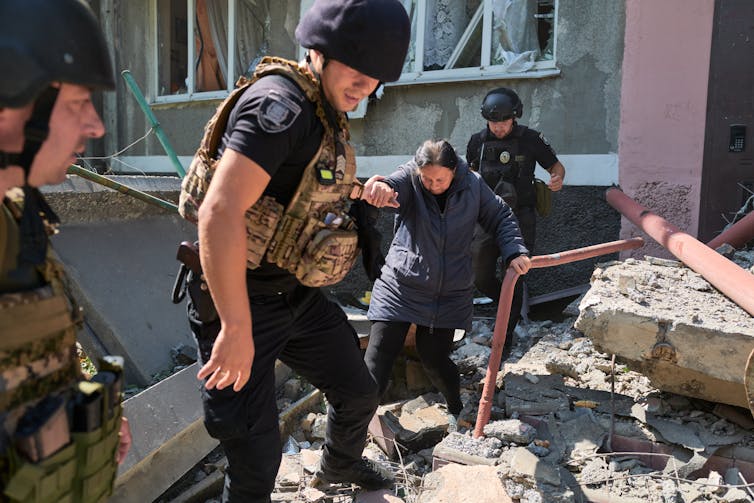Source: The Conversation – UK – By Iris Mikulic, Research Assistant, Department of Neurobiology, Care Sciences and Society, Karolinska Institutet

You have probably heard the phrase “follow your gut” – often used to mean trusting your instinct and intuition. But in the context of the gut-brain axis, the phrase takes on a more literal meaning. Scientific research increasingly shows that the brain and gut are in constant, two-way communication. Once overlooked, this connection is now at the forefront of growing interest in neuroscience, nutrition and mental health.
The gut–brain axis is a highly complex system of interconnected pathways that relay information through diverse signals. Previous research has suggested that gut inflammation may contribute to the development of dementia. This may occur through to the triggering of systemic inflammation and the disruption of the pathways between the gut and the brain.
While interest in the gut-brain axis has grown rapidly, there is still limited understanding of whether intestinal inflammation might accelerate cognitive decline in people who already have dementia.
IBD and dementia connection
Our study explored this under-researched question, aiming to expand understanding in this area and improve the care of those affected. We focused on people who had already been diagnosed with both dementia and inflammatory bowel disease (IBD).
Dementia refers to a group of neurological disorders with different underlying causes, all characterised by progressive cognitive decline and increasing loss of independent function.
It is a growing global health concern, with the number of diagnoses rising steadily around the world. Older age remains the most significant risk factor for developing the condition.
In 2024, the FDA approved donanemab, a second novel drug aimed at slowing the progression of early-stage Alzheimer’s disease – the most common form of dementia. However, there is still no cure, and current treatments are primarily focused on managing symptoms.
Inflammatory bowel disease (IBD) is a complex, chronic inflammatory condition affecting the gastrointestinal tract. It includes Crohn’s disease, ulcerative colitis, and IBD-unclassified (also called indeterminate IBD), which refers to cases where symptoms and clinical findings do not clearly fit the criteria for either Crohn’s disease or ulcerative colitis.
IBD is typically characterised by symptoms such as abdominal pain, diarrhoea and changes in bowel habits. However, because it can have systemic (extra-intestinal) effects, the condition can also affect other parts of the body, including the skin, eyes, joints and liver but can also cause general fatigue.
IBD should not be confused with irritable bowel syndrome (IBS), which is a common functional condition of the gastrointestinal tract. IBS can cause similar symptoms – such as abdominal pain and changes in bowel habits – however, unlike IBD, there are no changes in gut tissue.
While there is currently no cure for IBD, except in ulcerative colitis, where, in some select cases, surgery may be curative, IBD can often be managed with (anti-inflammatory) medications and lifestyle changes.
IBD is a global health problem. Worldwide, between 1990 and 2021, new cases increased across all age groups, with the biggest jump seen in people aged 50 to 54. The smallest increase occurred in children under five. Importantly, IBD can be diagnosed from early childhood to later life, but in older adults, among others, symptoms can be mistaken for other conditions – potentially delaying diagnosis and treatment.
For our study, we used data from the Swedish Registry for Cognitive/Dementia Disorders (SveDem) – a comprehensive national quality registry that holds detailed medical information on people with various forms of dementia across Sweden. From this database, we identified people who were diagnosed with IBD after their dementia diagnosis. We then compared 111 people who had both dementia and newly diagnosed IBD with a control group of 1,110 people who had dementia but no IBD diagnosis. The two groups were closely matched for age, gender, type of dementia, other health conditions and medication use.
Measuring cognitive decline
To measure changes in cognitive function, we used the Mini-Mental State Examination (MMSE) score. The MMSE is a standardised test made up of 11 tasks, with a maximum score of 30 points. It is widely used by healthcare professionals to assess memory, attention, language and other aspects of cognitive performance, particularly when dementia is suspected. People without dementia typically score between 25 and 30, while those with dementia often score below 24.
In our study, we compared MMSE scores between the two groups. We also looked at changes in MMSE scores before and after the IBD diagnosis in people who had both dementia and IBD. Our results showed that those with both conditions experienced a significantly faster decline in cognitive function. This decline became more noticeable after the IBD diagnosis. On average, people with both diagnoses lost nearly one additional MMSE point per year compared to those with dementia alone. This level of decline is comparable to the difference seen between people with dementia who take the new Alzheimer’s drug donanemab and those who do not.
Our findings suggest that IBD – and the systemic inflammation it causes – may contribute to a faster worsening of cognitive function. This highlights the need for closer monitoring of people with both conditions. Managing IBD effectively through anti-inflammatory medications, nutritional support and in some cases surgery, might potentially help reduce neuroinflammation, thereby slowing the progression of dementia.
While our results indicate that cognitive decline was significantly faster in people with both dementia and newly diagnosed IBD, it is important to note that this was an observational study, so we cannot establish direct causality. The study also had some limitations. For instance, we lacked data on IBD severity and the specific treatments patients were receiving. We also did not explore differences by gender, dementia subtype, or IBD subtype.
Additionally, since dementia is typically diagnosed in older age, the elderly onset IBD cases may have been underdiagnosed. Finally, while SveDem is a valuable national registry, it does not yet include all newly diagnosed dementia cases in Sweden.
Understanding how IBD influences the brain could open the door to new strategies for protecting cognitive health in older adults. Furthermore, identifying whether specific IBD treatments can slow cognitive decline may benefit people living with both conditions and could help with the refinement of care for this vulnerable patient population.
![]()
Hong Xu receives funding from the Swedish Research Council (Starting grant#2022-01428) and the Center for Innovative Medicine Foundation (CIMED, FoUI-1002840).
Jonas F. Ludvigsson has coordinated an unrelated study on behalf of the Swedish IBD quality register (SWIBREG). That study received funding from Janssen corporation. Dr Ludvigsson has also received financial support from Merck/MSD for an unrelated study on IBD; and for developing a paper reviewing national healthcare registers in China. Dr Ludvigsson has also an ongoing research collaboration on celiac disease with Takeda.
Iris Mikulic does not work for, consult, own shares in or receive funding from any company or organisation that would benefit from this article, and has disclosed no relevant affiliations beyond their academic appointment.
– ref. How inflammatory bowel disease may accelerate the progression of dementia – https://theconversation.com/how-inflammatory-bowel-disease-may-accelerate-the-progression-of-dementia-260904







